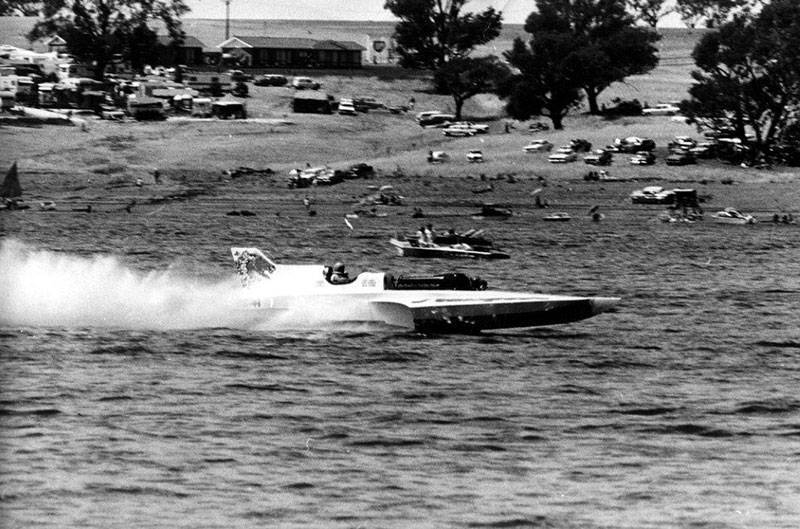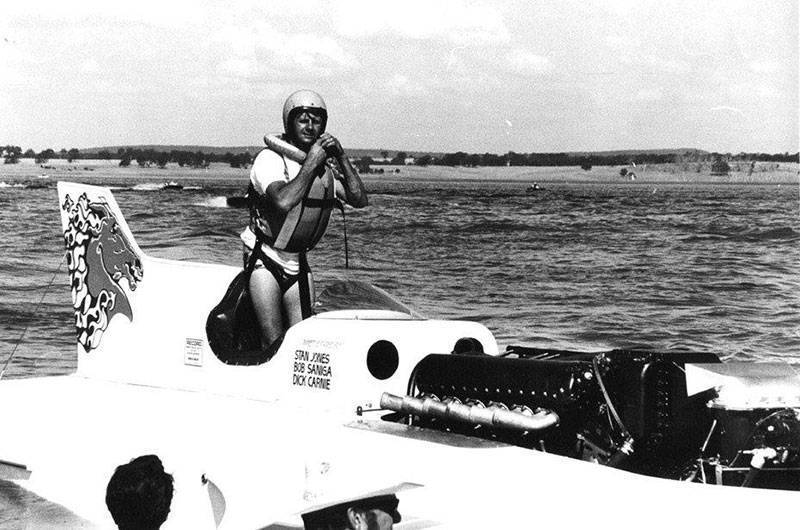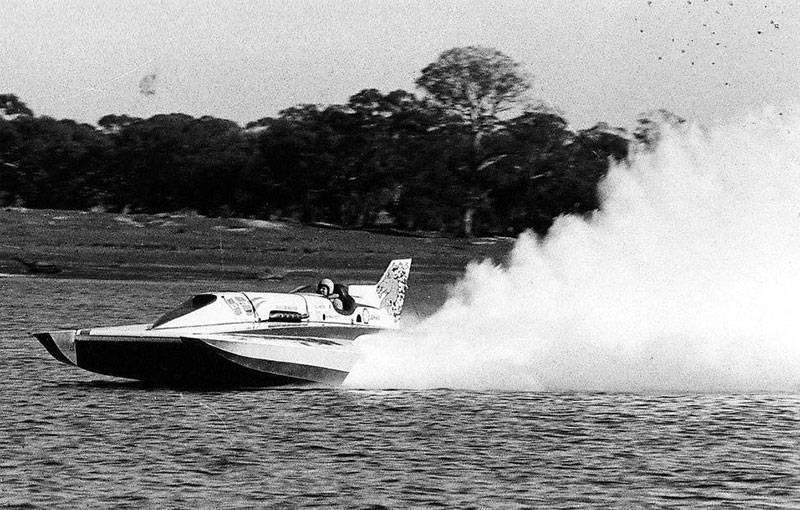The Beginning – 1955
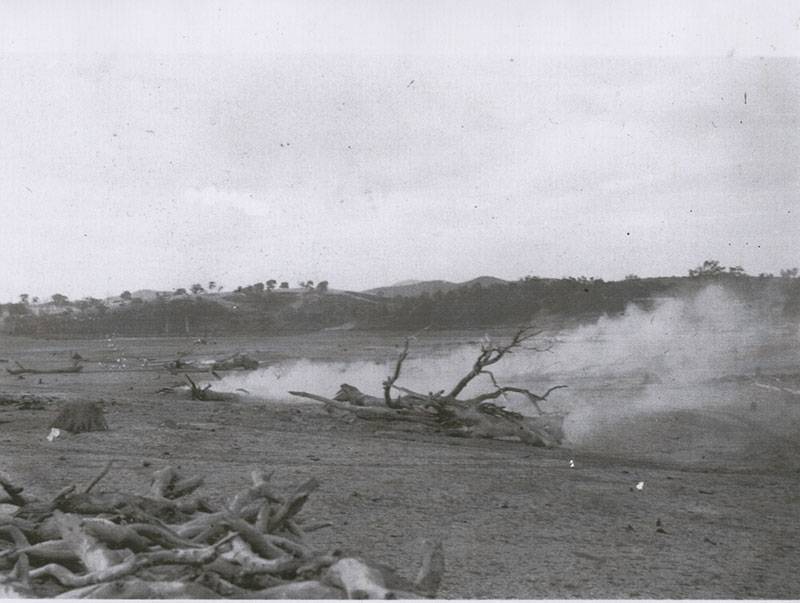
The Glenmaggie & District Boat Club Inc. (GDBC) was established in 1955 on the foreshore on the Lake Glenmaggie Dam, adjacent to the Glenmaggie Bridge. At this time the surrounds were a wilderness. It has a long and proud history of power boat racing for the Wellington Shire region.
The first item of business at the inaugural meeting was to arrange the removal of tree stumps from the proposed racing area. So with many quantities of dynamite and with many weekly rosters the founding 32 members set to complete this task.
Time was of the essence in that first year as for the first time after the building of the dam the level of the lake began to rise.
Original members of the club can recount stories of rowing out to trees still remaining on the course, strapping dynamite to the trunk, and following the lighting of the fuse, a spirited row back to the safety of the shore.
Such was the enthusiasm to commence racing at the time, one young member at the time, can recall forgetting to unfasten the rope from the tree and the shock shown on the faces of all on board when despite furious attempts, no distance was made to the ever shortening fuse. In following years boat ramps were cut and a club hut was erected which is still standing today
8th November 1955
The club purchased a “Dressing Shed ” for 27 pounds. It was decided that it would be advantageous to have the Heyfield Boy Scouts conduct a soft drink stall on club racing days and a Mr Raynor be approached to be the first aid attendant.
A proposed program for the club day on 18/2/56 , showed a half hours spacing between races!!! The Major race was to be an open handicap with prize money of 1st 8 pounds, 2nd 3 pounds, and 3rd one pound.
A motion was passed for the secretary to write to Mr L Parker who was injured when his boat ” Hornet ” sank on 20/11/55, expressing the club’s concern regarding the accident and offering the help of the club ” in any matter causing him concern.”
17th January 1956
It was decided to write to the Vic APBA Council, stating that the club was quite satisfied the new racing rules. The next race program (eight races) was to include a relay race.
13th February 1956
The Secretary was detailed to see the Rev Hammond concerning the clashing of club race days with church Services at Glenmaggie.
Mr W Cook moved that the club Burgee and car pennant have a Royal Blue background with white lettering and Glenmaggie and District Boat Club and the silohuette of a red skiff surrounding.
Discussion was held re a phone call from Mr Blair of Port albert requesting that the club put on a days racing there. It was decided that Easter Monday would be a favourable date.
20th March 1956
The club was notified that the Snowy River Club had been reformed and joined the Gippsland Group.
A working bee was organised to clear the course area with the aid of Mr I McPhersons tractor.
21st August 1956
At the second AGM held at the Heyfield Fire Brigade Hall, with 32 attendees, the Commodore – G Higgins, in his report stated that although the club spent quite a lot of money on equipment and clearing the course, it was in a very sound financial position (133/18/5 in the bank)
Office bearers for the following season were:
Commodore G Higgins
Vice Commodore L Branch
Rear Commodore G Purvis
Secretary C Skeels
Treasurer J Pruden
A further eight members were elected to the committee, and subscriptions were: Boat Owners 1 Pound, 10 shillings
Members: Fifteen Shillings
Juniors: seven shillings and sixpence
Wives of members automatically became members!!
It was reported from the APBA that restricted hulls could no longer compete in un-restricted championships as they had been doing and that all clubs in Gippsland Group must appoint an “Inspector” to inspect all competing boats which had to conform with the following:
Bouyancy tanks or tubes, Fire Protection, Life Jackets, Good Steering, return spring on throttle and carry at least one paddle.
1960’s to 2000’s
In these early days, boat racing on the Lake was one of the few forms of entertainment that brought large numbers of the rural community together. Skiffs and Runabouts featured on the race program which took on a country picnic atmosphere.
These boats were nothing more than family ski boats perhaps powered by old side valve Ford or Chrysler engines.
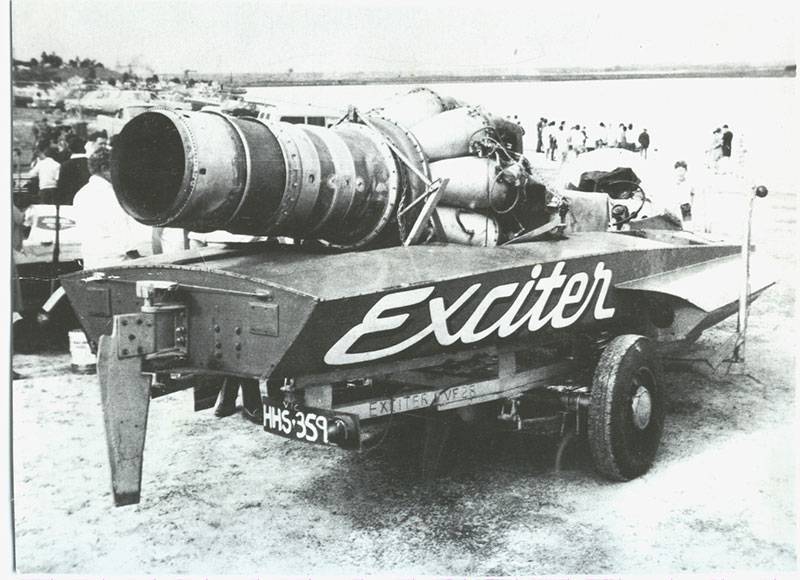
Early boats such as EXCITER, which was fitted with the jet engine from a Vampire Fighter jet, were first tested at Lake Glenmaggie.
The Glenmaggie region was home to a boat nicknamed “The Glenmaggie Monster – Stampede” was the fastest unlimited Hydroplane boat in Australia with a Rolls Royce Merlin V12 supercharged aircraft engine. It was always bringing home the Gold from all over Australia.
In 1996 the first modern Turbine powered Unlimited Hydroplane purchased from America was test run at the GDBC club site
Modern Times
Perhaps the simplicity of that era is sadly missing in the modern race arena but the enthusiasm of the competitors remains the same. Today the club is a vibrant mix of drivers and families, still dedicated toward bringing world class Power Boat Racing to the local region.
GDBC members have always been fiercely competitive and over the years have held many Australian and State titles today. Currently the club boasts the Australian Champions in both of the following …
- 1.6 Litre Hydroplane Class and the
- 4.2 Litre Stock V8 Displacement class
STAMPEDE – Stan Jones and Robert Saniga
Owned jointly by Stan Jones and Bob Saniga, this 23 foot hydroplane was one of the first Australian race boats to successfully run a World War II ex-aircraft engine, in this case a massive V12 Rolls Royce Merlin engine from a Lancaster bomber. While Stan and Bob attend to the driving, aircraft engine genius. Clem Anderson looks after the fantastically complex 16 litre, 2000 hp power plant that has taken Stan Jones to 154.3 m.p.h. — an Australasian record. Co-winners of the 1970 and 1971 Griffith Cup, Stan and Bob will be trying hard to make this their third in a row. Both drive with skill and determination. Both are dyed-in-f he-wool hydroplane enthusiasts and together they make one of Australia’s greatest hydroplane driving teams.
